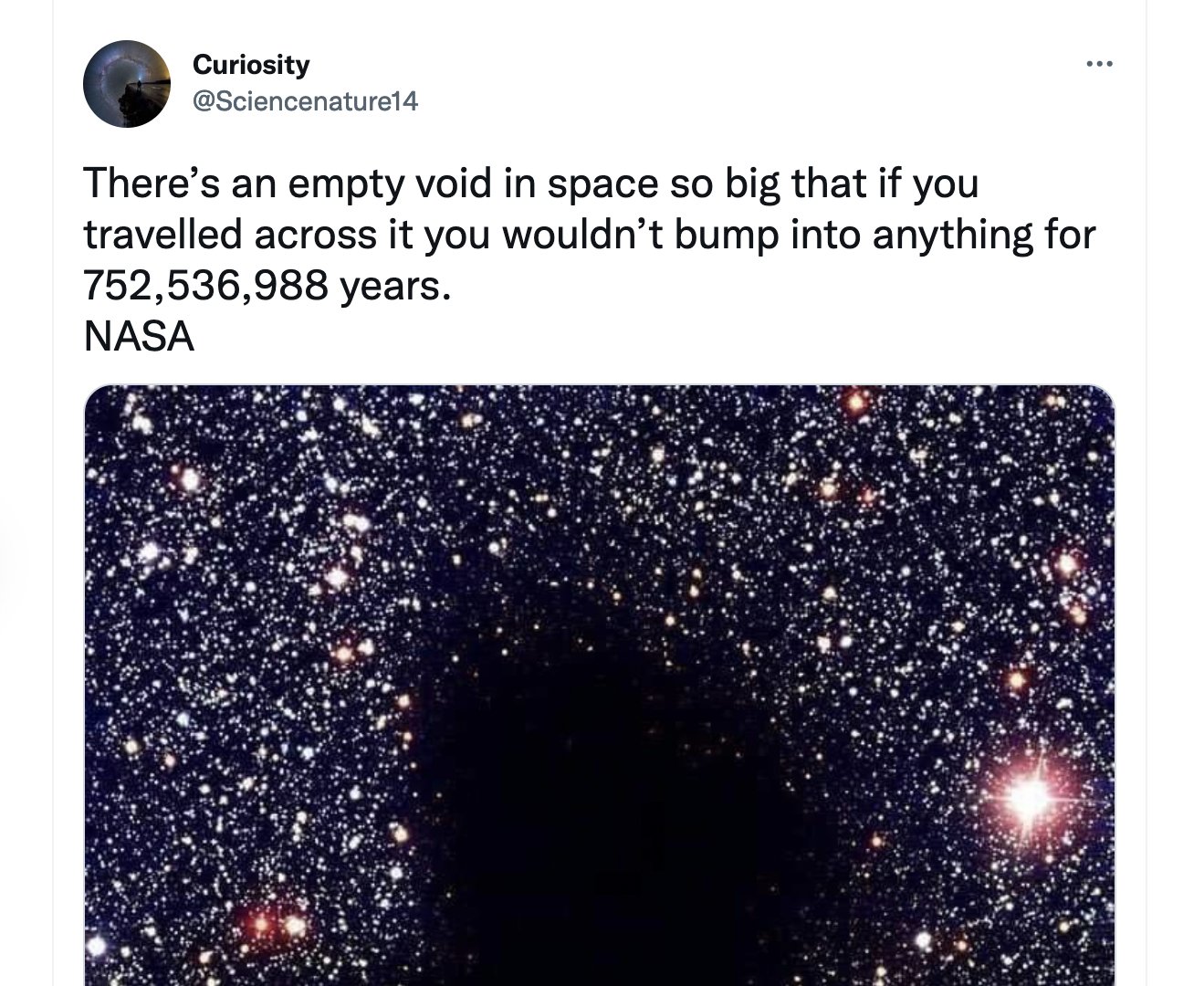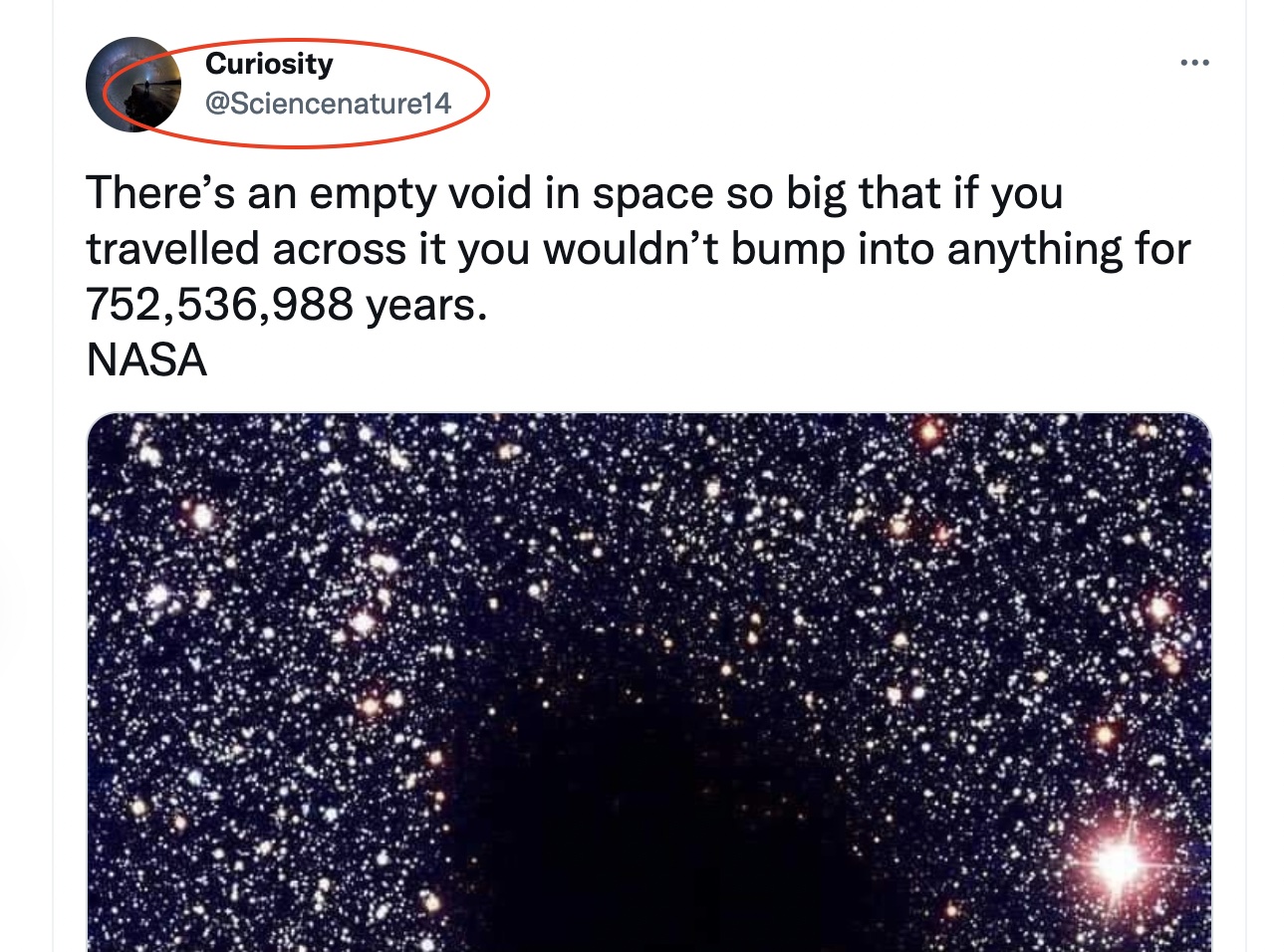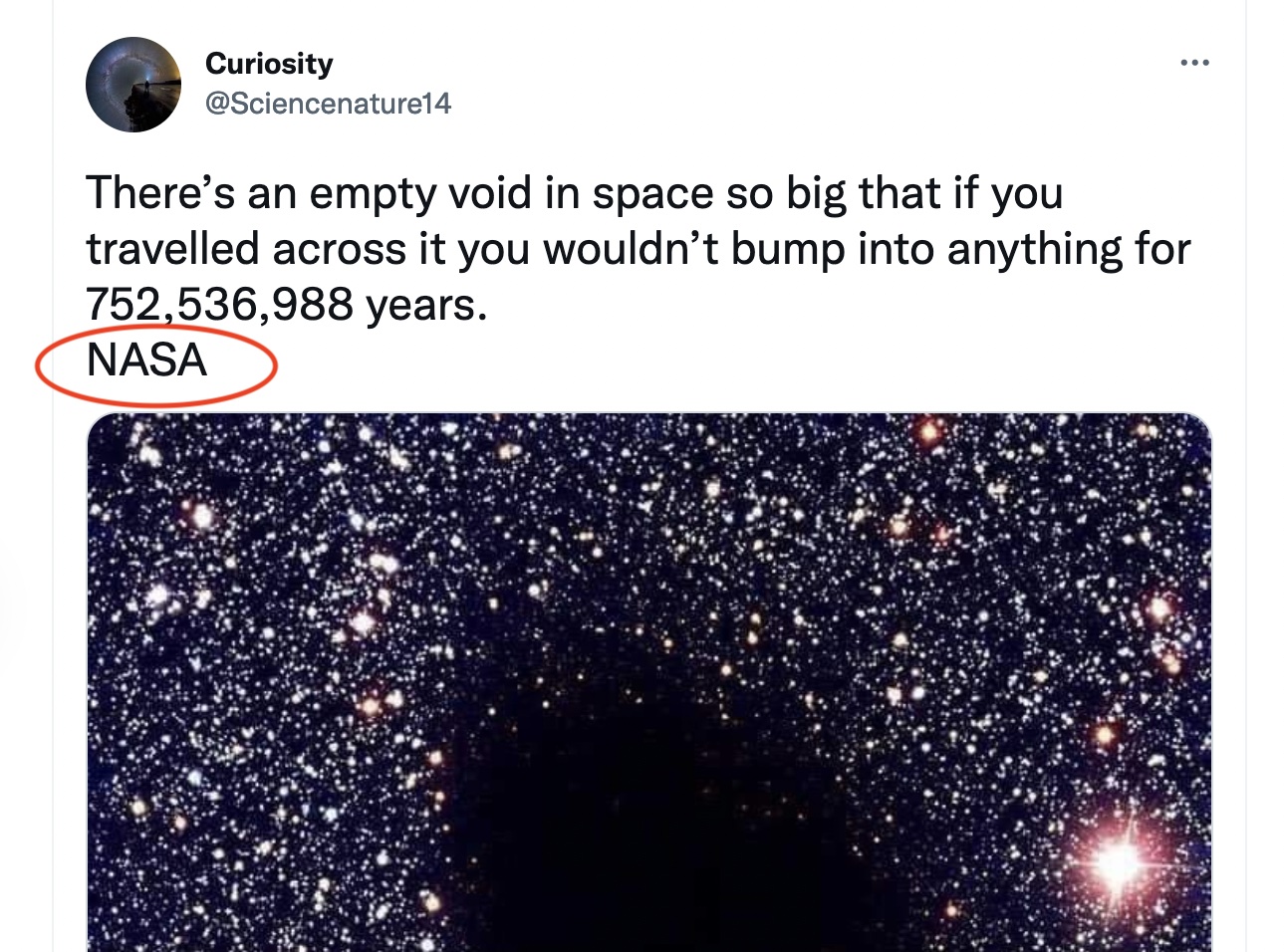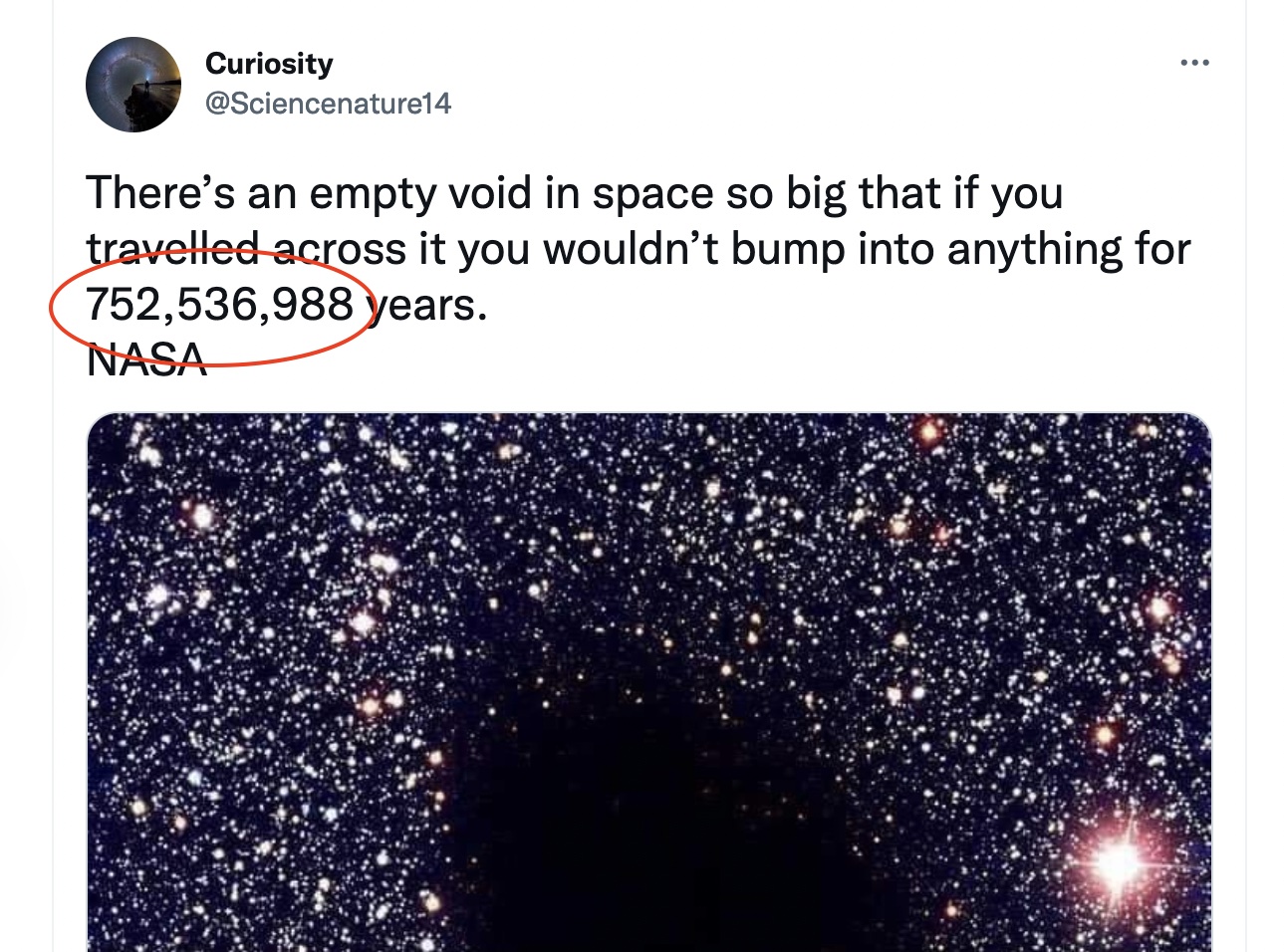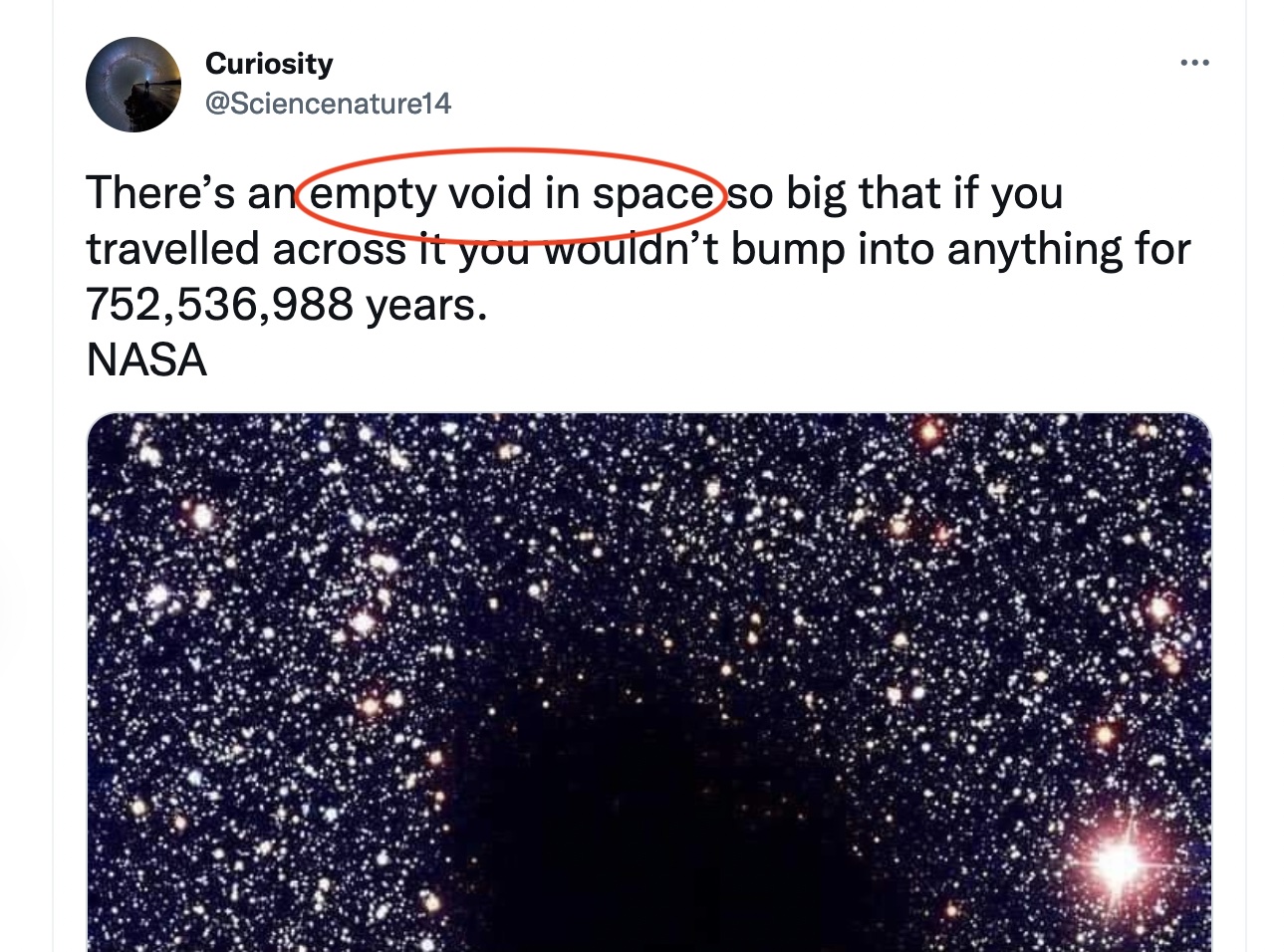Thread
Twitter is full of "wonder science" accounts, many of them full of stolen images & misinformation. The recent viral tweet about the alleged void in space offers a good case study in how to spot the fakes. 1/5
Test #1: Who is sending the tweet? Reputable researchers, journalists, and institutions identify themselves. If the account is anonymous and contains no information, you should be suspicious. 2/5
Test #2: What is the source of the information? If there is no source/link (or a generic ID like "NASA"), that's a red flag. It's also a common tactic in bot accounts that scrape or steal images from the actual creators. 3/5
Test #3: Improbable precision. It's a classic bluffing technique.
If someone told you, "I drove from Boston to New York in 1.49328546 hours," you'd recognize that the precision is impossible even before you register that the speed is impossible. 4/5
If someone told you, "I drove from Boston to New York in 1.49328546 hours," you'd recognize that the precision is impossible even before you register that the speed is impossible. 4/5
Test #4: Common sense is useful even in deep space! If someone is trying seriously to explain a counterintuitive idea, they'll break it down for you. If someone is trying to confuse you, they'll just leave the claim sitting there. 5/5
Want the real story behind the "void in space"? It's actually a dusty interstellar cloud, probably on its way to collapsing into a new star in about 100,000 years.
More information here, via the European Southern Observatory: www.eso.org/public/usa/news/eso9934/
More information here, via the European Southern Observatory: www.eso.org/public/usa/news/eso9934/
Bottom line: These anonymous twitter accounts want big lists of followers, and you don't want to be on those lists. Please don't follow, or unfollow. There are many other legit places to get amazing science information.
